With their fuzzy dark-masked faces and furry ringed tails, raccoons might seem like cute, innocent critters – but looks can be misleading. In reality, having raccoons in and around your home can be dangerous for you, your family, your pets and your house. If raccoons are prowling your neighbourhood, don’t worry. These tips will help you identify if your home is at risk – and safeguard your space from raccoons.
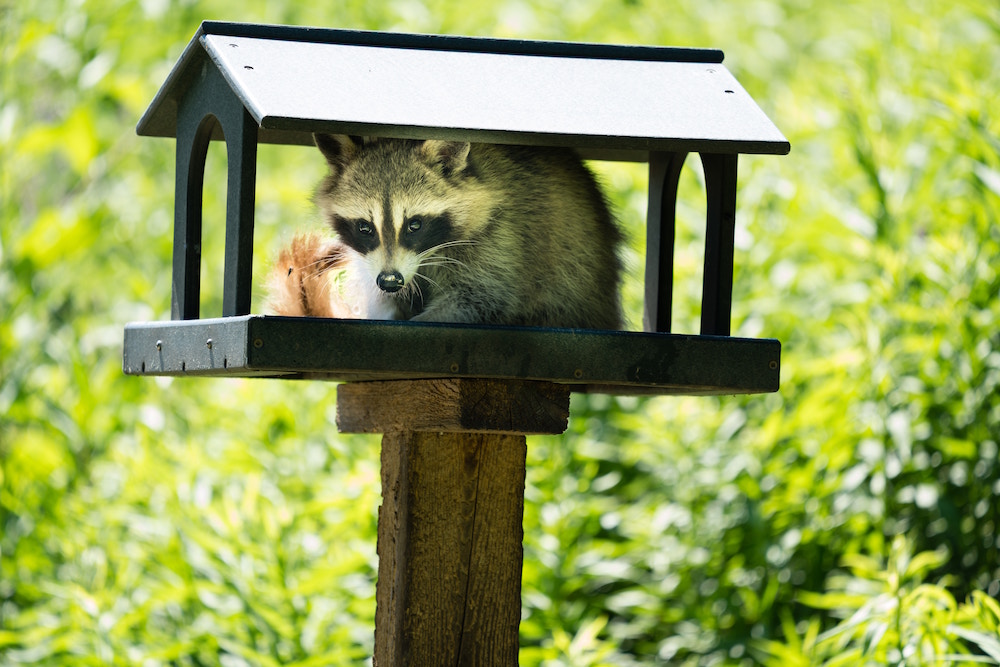
The Problem With Raccoons
You might be thinking: “Do I really need to worry about raccoons? They’re small, adorable and seem harmless.” Unfortunately, though they may look similar to the domesticated pets many of us love, raccoons are not docile – they’re wild animals.
Related: See the Surprisingly Beautiful Ways These Cat Owners Transformed Their Homes for Their Pets
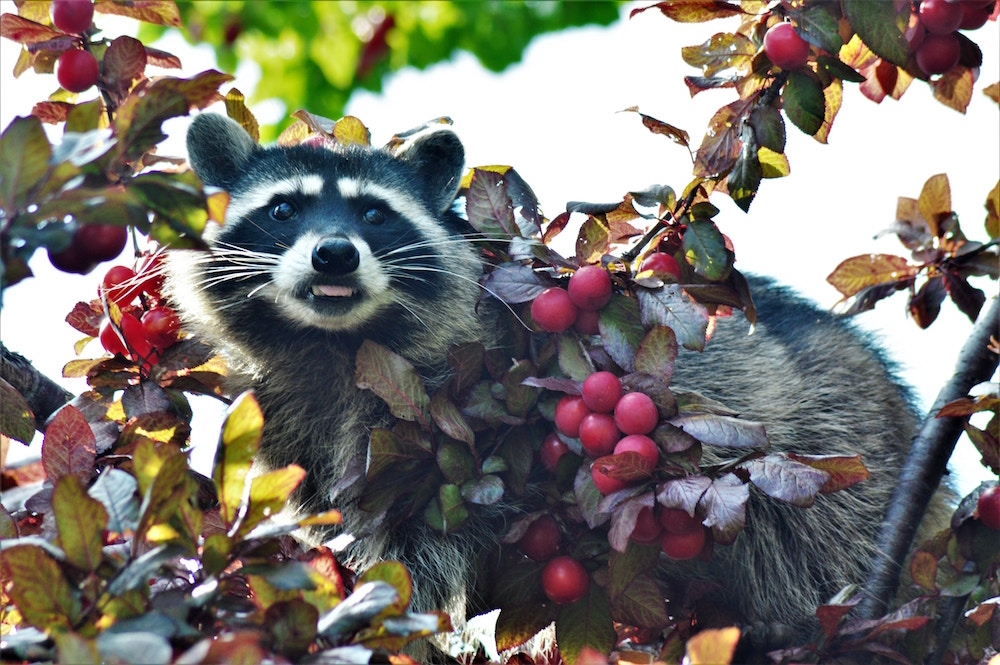
They’re Aggressive
Because raccoons are wild, they can become aggressive if they feel threatened. When they feel vulnerable, raccoons may lash out by biting or scratching people or pets they encounter – which is especially dangerous because they are common carriers or serious diseases like rabies.
Related: 20 Plants That Are Safe for Children, Cats and Dogs
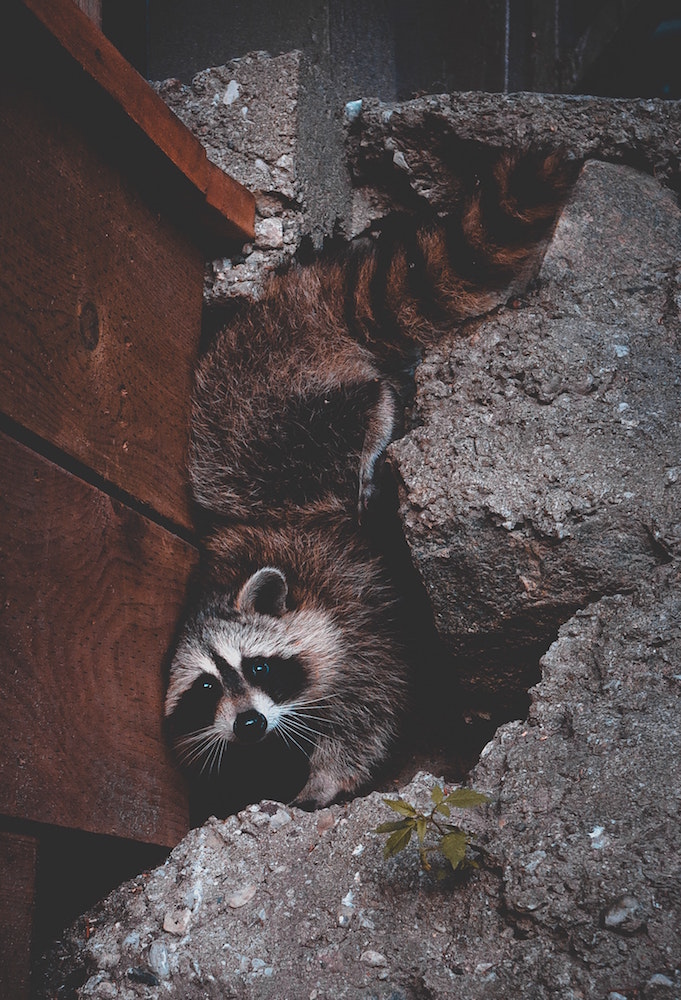
They Damage Your Home’s Structure
Even if you don’t confront them, raccoons can damage the structure of your property if they get inside. As they make their way into your home, raccoons can wreak havoc by tearing off roof shingles and fascia boards, damaging rooftop ventilators and slashing through insulation.
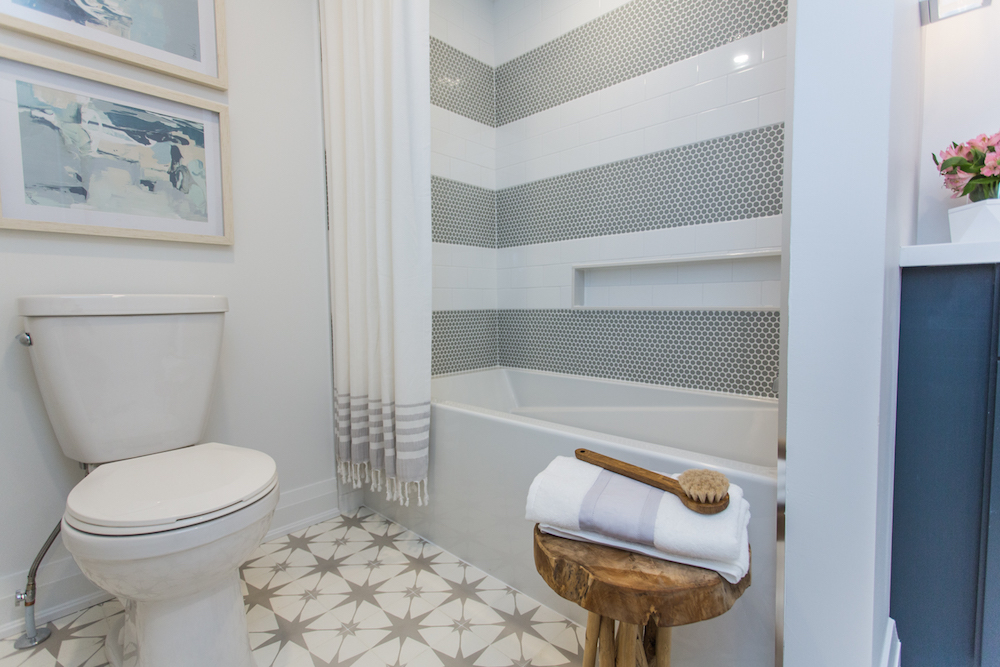
They Leave Hazardous Souvenirs
Inside your home, raccoons still need to go – but they won’t be using your bathroom. Instead, raccoons leave behind their droppings, which – in addition to being plain unsanitary – can carry harmful diseases and parasites.

Signs You Have a Problem
Because raccoons are nocturnal, they’re likely living on a different schedule than your family – which makes them tricky to discover. So what can you do if you suspect that raccoons might already have already made themselves at home in your home? Look and listen. Look for telltale signs of raccoons, such as structural damage (like torn shingles), evidence of feeding (like ransacked trash), tracks and droppings. Listen for rustling or cooing sounds emanating from the walls – this could be a sign of a baby raccoon in hiding.
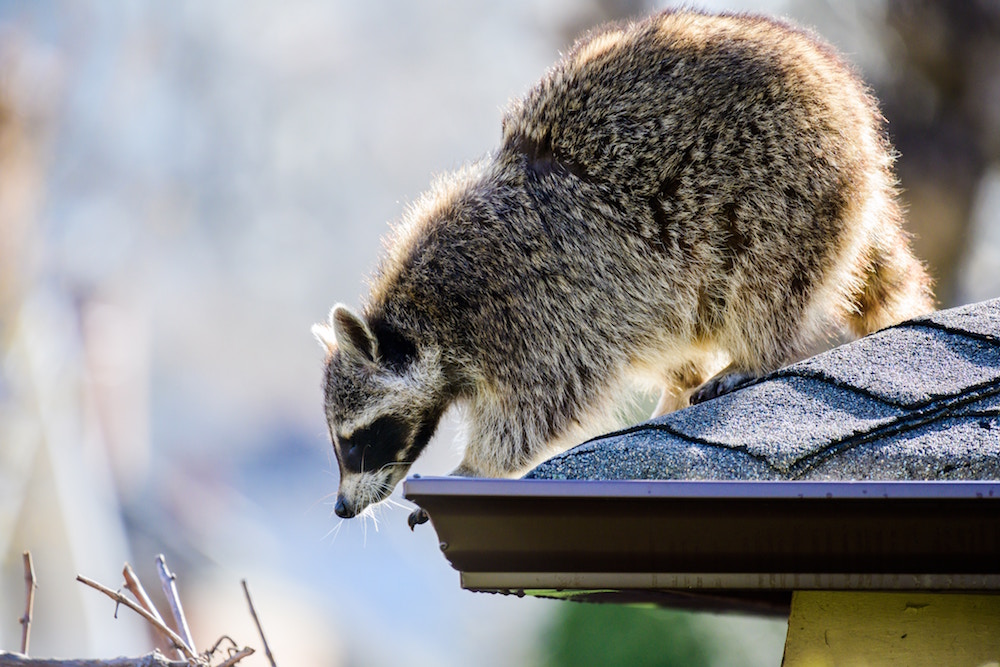
Assess the Situation
Whether you see signs of raccoons or not, it’s a good idea to regularly inspect your home’s exterior for vulnerable areas that raccoons might exploit in order to enter your house. Raccoons are especially likely to hunt down your home in the fall months, as they prepare for the cold winter.
Related: 20 Things That Homeowners Should Do Annually, but Don’t
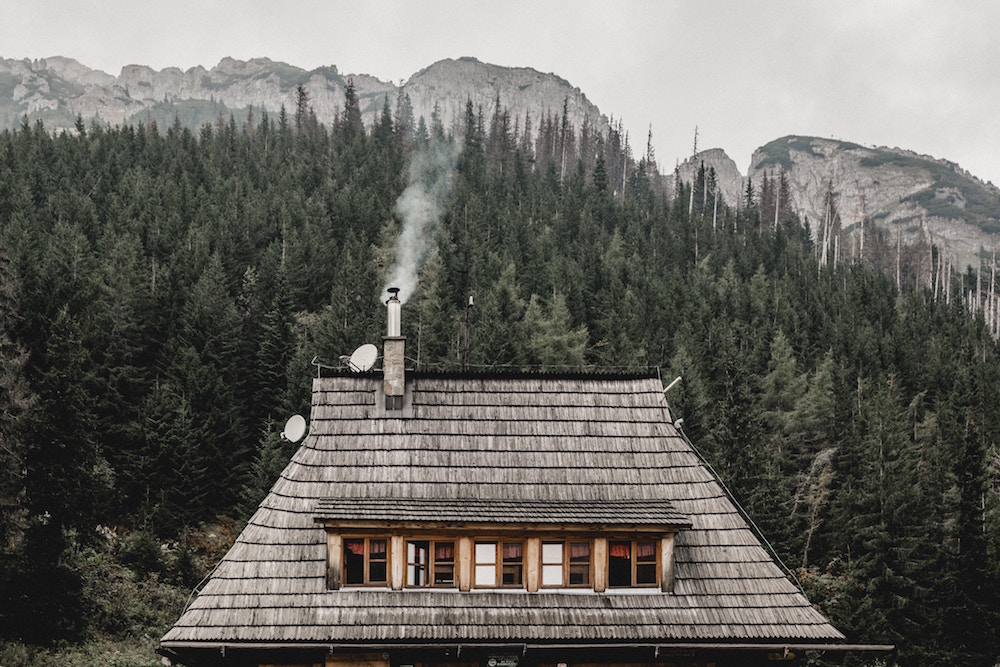
Top Places to Check
Raccoons are looking for a warm place to live (and, for female raccoons, potentially nest). The top places in a home that they’re drawn to? The roof and roof vents, attic, chimney, crawl space and under the porch or deck.

How to Get Raccoons Away From Your Home
Getting rid of raccoons once you have them is difficult and expensive, so the best way to curtail raccoon damage and keep them out of your habitat is to take steps to prevent them from ever getting in. One big step to prevent raccoons from getting in is to block their access. This means repairing any holes or reinforcing high-risk access areas, like roof vents or under the deck, with covers like heavy wire screening.
Related: 10 Home Repair Hacks You Wish You Knew Before Hiring a Contractor
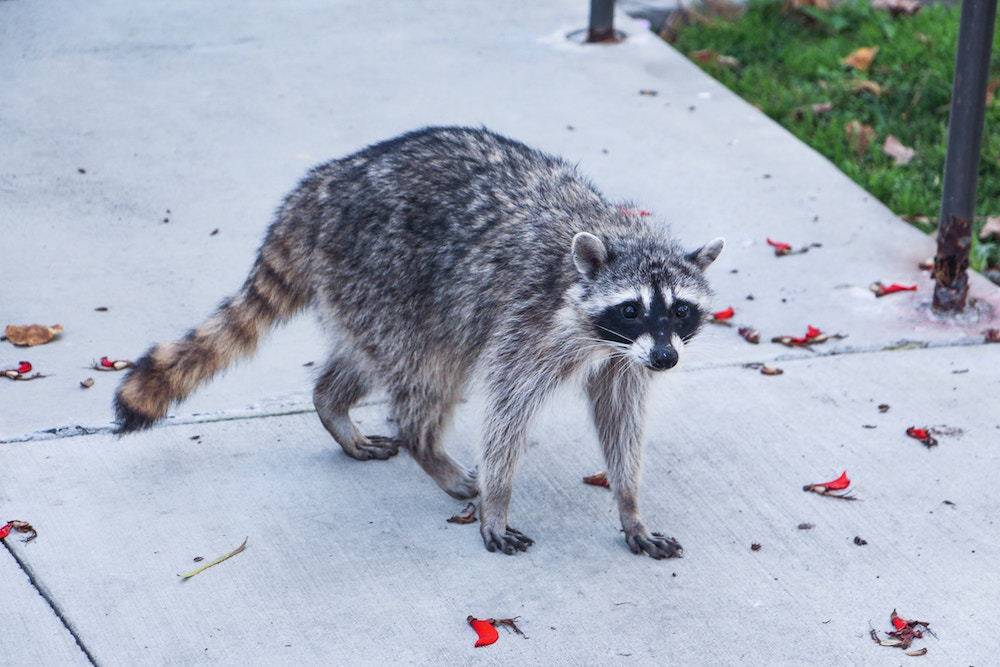
Don’t Feed the Wildlife
Raccoons are hungry, so don’t tempt them to come to your home with the prospect of food. Never, ever try to feed raccoons by hand and don’t leave food out for them – this includes not leaving pet food outside, as raccoons likely won’t respect that the kibble was intended for the cat.

Let’s Talk Trash
Even if you aren’t feeding wildlife by hand, you might still be – inadvertently – feeding them and keeping them around if you aren’t mindful of your home’s garbage situation. Keep your garbage inside until collection day if possible and at a minimum, ensure that the lids on outdoor trash cans are secure (whether through locking mechanisms, cords or weights). If you’re ambitious and have lots of garbage to deal with, consider building a locking enclosure to help keep raccoons away.
Related: 20 Fast and Easy House Cleaning Hacks Everyone Should Know
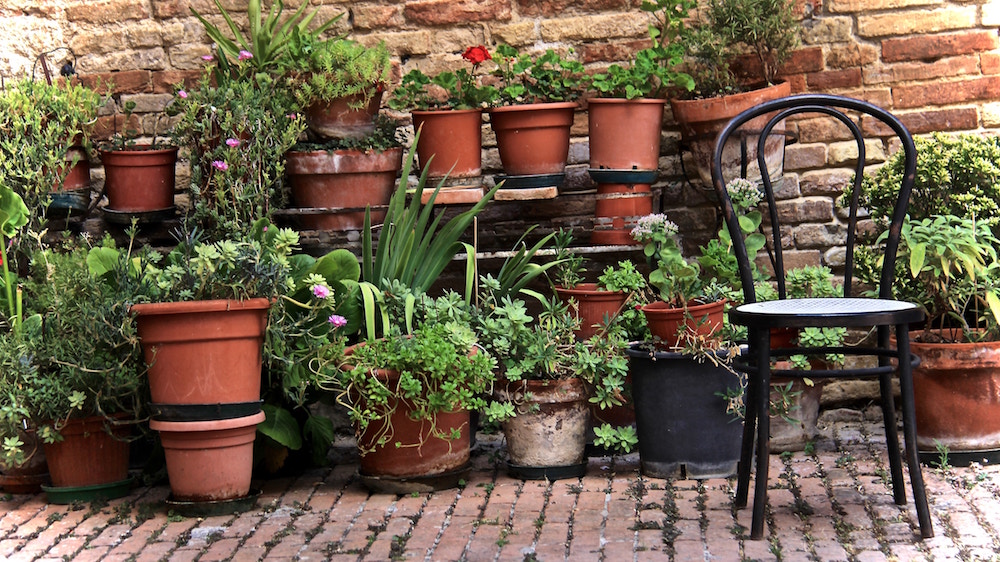
Spice Things Up
Another way that raccoons can snack around your home? Your garden. Harvest any ripe fruits or vegetables right away and help make your house unsavoury to the critters by spicing things up – sprinkle chili pepper or cayenne pepper over the area. And, when you’re done with food and garden scraps, be sure to keep your compost in a container with the same level of security you use for your outdoor trash cans.
Related: How to Keep Pests out of Your Lawn and Garden Using Natural Products

Trim the Trees
When it comes to climbing, raccoons are basically parkour pros – so it’s smart to ensure there isn’t anything they can clamber up to gain easy access to your home. Put a smooth surface like plastic or metal at the foot of trees (so raccoons don’t have anything to grab onto to start their climb) and consider giving any tree branches that are placed close to your home a trim. Aim for at least six to eight feet of distance from your home, if possible.
Related: How to Protect Outdoor Plants and Trees From Frost and Freeze
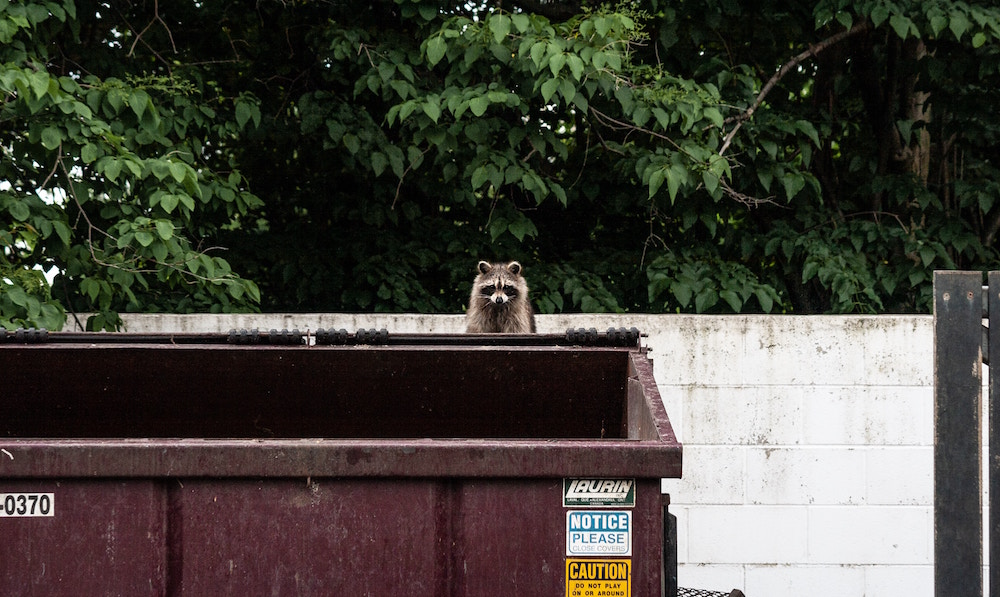

What to Do With a Raccoon
If you happen to catch a raccoon in your home, don’t panic, don’t confront them (remember, a threatened raccoon may attack) and don’t break out the poison (killing wildlife is illegal). Instead, your best bet is to contact your municipality or a trained, professional pest control company to help you trap and get rid of the raccoons.
HGTV your inbox.
By clicking "SIGN UP” you agree to receive emails from HGTV and accept Corus' Terms of Use and Corus' Privacy Policy.




